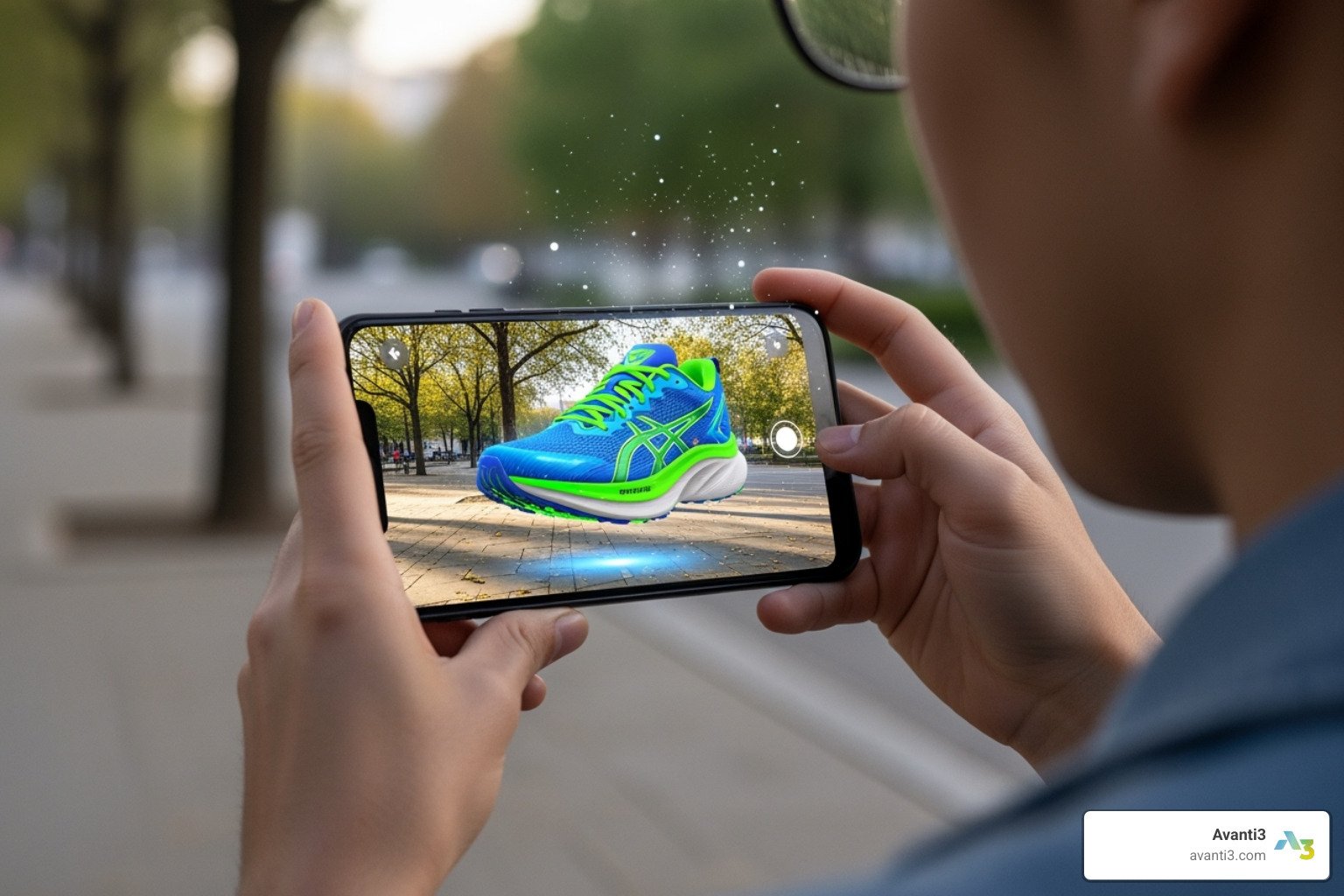Customer Engagement Platform: 10 Powerful Benefits in 2025
The Digital Engagement Revolution
A customer engagement platform is a unified software solution that helps businesses manage, personalize, and automate interactions across multiple channels throughout the customer lifecycle. These platforms combine data collection, analysis, and activation tools to create seamless, personalized experiences that build lasting relationships.
What is a Customer Engagement Platform?
– Definition: A centralized system that tracks, manages, and enables interactions across email, messaging, social media, and other channels
– Core Function: Creates a unified customer view to deliver personalized experiences at scale
– Key Components: Customer data platform, omnichannel communication tools, analytics, and automation capabilities
– Primary Benefit: Increases customer retention, satisfaction, and lifetime value
In today’s digital landscape, businesses face unprecedented challenges in connecting with customers. With the average person wading through 98 business emails daily and expectations for personalization at an all-time high, traditional engagement methods fall short. The statistics tell a compelling story: 88% of companies report personalization as extremely important to their engagement strategy, while 91% of customers say they’ll stop doing business with a company after a frustrating experience.
Think of a customer engagement platform as a command center where all your customer interactions, data, and communication channels converge into a single, powerful system. Rather than juggling multiple disconnected tools, these platforms unify everything from email and SMS to in-app messages and social media, creating cohesive customer journeys that drive loyalty and growth.
“We’re in the midst of an AI and data revolution – and it’s changing what customers expect.”
Modern engagement platforms have evolved beyond simple CRM systems, incorporating AI-driven insights, personalization engines, and omnichannel capabilities that deliver the right message, on the right channel, at exactly the right moment. This change has helped brands like Toyota achieve a 166% increase in test drive applications and enabled companies like NA-KD to boost customer lifetime value by 25%.
I’m Samir ElKamouny AV, an entrepreneur and marketing expert who has helped numerous businesses implement customer engagement platforms to scale their operations and transform their customer relationships. My experience has shown that the right customer engagement platform doesn’t just improve metrics—it fundamentally changes how businesses connect with their audiences.
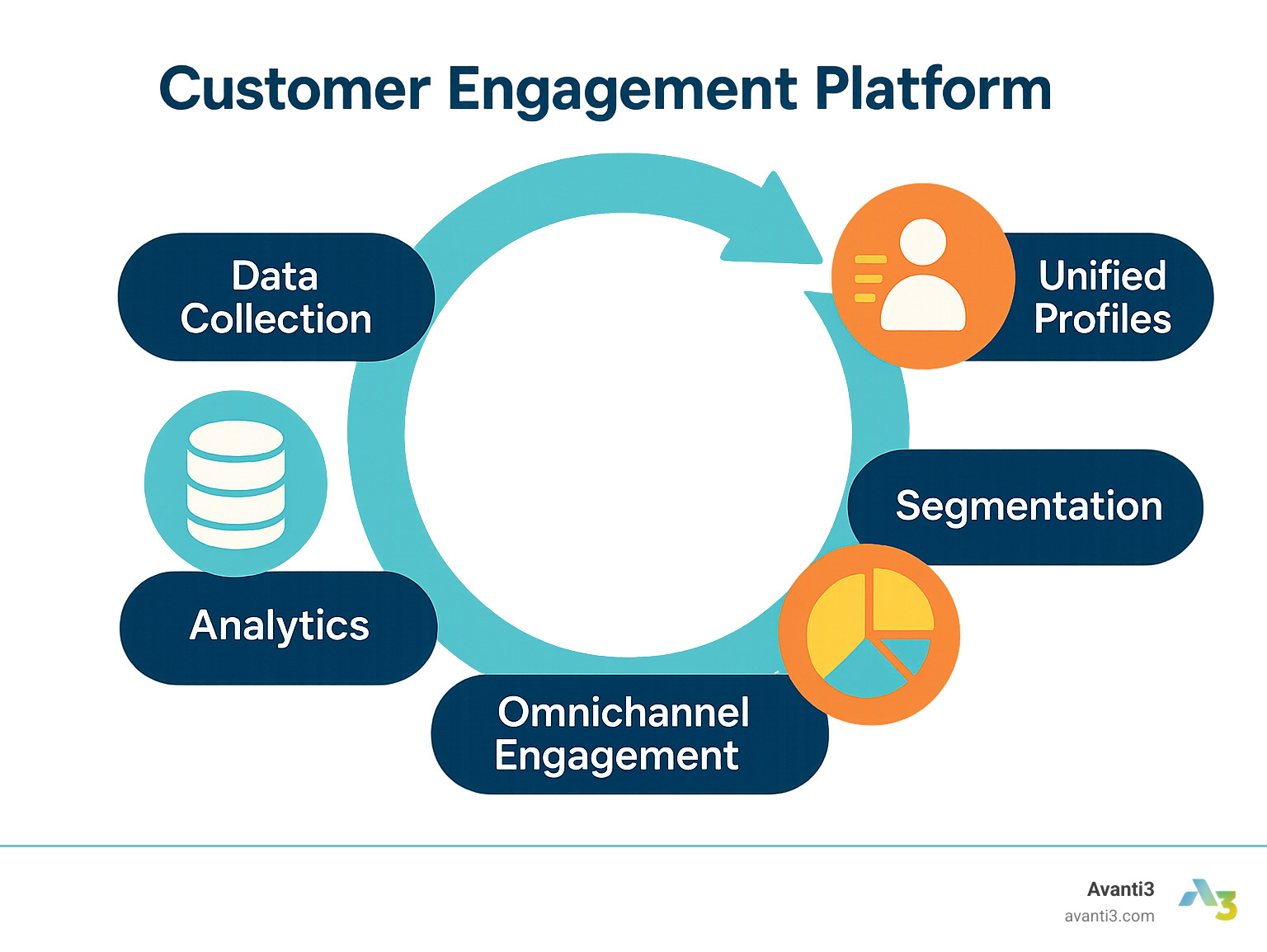
Essential customer engagement platform terms:
– AI digital tools
– digital engagement for sales cloud
– digital engagement service cloud
What Is a Customer Engagement Platform?
A customer engagement platform is the beating heart of your modern customer relationships. It brings together all your customer touchpoints into one intuitive system where your team can create meaningful connections without jumping between a dozen different tools.
Think of it as your business’s mission control center—where customer data, communication channels, and engagement tools all live under one roof. This unified approach solves one of the biggest headaches businesses face today: fragmented customer experiences caused by disconnected systems and scattered data.
As we steer toward a privacy-first digital world (with Firefox and Safari already blocking third-party cookies and Chrome following suit in 2024), a customer engagement platform becomes your secret weapon. It helps you shift to collecting and activating first-party data—information your customers willingly share with you—ensuring you can still deliver personalized experiences even as traditional tracking methods disappear.
| System | Primary Purpose | Data Capabilities | Engagement Powers |
|---|---|---|---|
| CRM | Tracks sales contacts & deals | Stores basic customer info | Limited to sales processes |
| CDP | Unifies customer data | Creates 360° customer profiles | Requires external tools for action |
| CEP | Powers omnichannel engagement | Combines profiles with real-time behavior | Built-in tools to engage across all channels |
As one expert puts it: “While CRMs organize customer information and CDPs unify data, a customer engagement platform adds the crucial activation layer—letting you use that data to create meaningful interactions across every touchpoint.”
How a Customer Engagement Platform Works
The magic behind a customer engagement platform unfolds in five seamless stages:
First, it collects valuable first-party data from your website, mobile app, and other customer touchpoints. Next, it unifies this information to create comprehensive customer profiles, eliminating the fragmented views that plague most businesses.
Using AI and sophisticated analytics, the platform then segments your audience into meaningful groups based on their behaviors, preferences, and needs. With these insights, it orchestrates personalized journeys across channels, automatically triggering the right message at the perfect moment.
Finally, it continuously learns and improves by analyzing results and customer feedback, making each interaction smarter than the last.
Here’s how this works in real life: When Sarah signs up for your service and gives it a three-star rating, your customer engagement platform automatically sends her a thoughtful email with a special offer. Later, when Sarah hasn’t logged in for a week, the system sends a friendly SMS suggesting she try your mobile app. All this happens automatically, based on real-time triggers and Sarah’s unique behavior patterns.
CRM, CDP & Customer Engagement Platform Differences
While these systems might seem similar at first glance, they serve distinctly different purposes in your technology ecosystem.
A CRM excels at managing your sales pipeline and storing basic customer information. It’s great for tracking who talked to whom and when, but it wasn’t built for comprehensive data integration or sophisticated engagement.
A CDP takes things further by creating unified customer profiles from multiple data sources. It solves the data fragmentation problem but typically lacks built-in tools to act on those insights.
A customer engagement platform represents the evolution of both technologies. It not only unifies your customer data (like a CDP) but also provides powerful tools to create, automate, and optimize customer interactions across all channels—all without leaving the platform.
The key difference is in the activation layer: while other systems help you understand your customers, a customer engagement platform empowers you to actually engage them in meaningful, personalized ways that build lasting relationships.
Benefits of Using a Customer Engagement Platform
The magic of a customer engagement platform isn’t just in having another shiny tool—it’s about changing how your business connects with people at every touchpoint. When implemented thoughtfully, these platforms create wins for both your business and your customers.
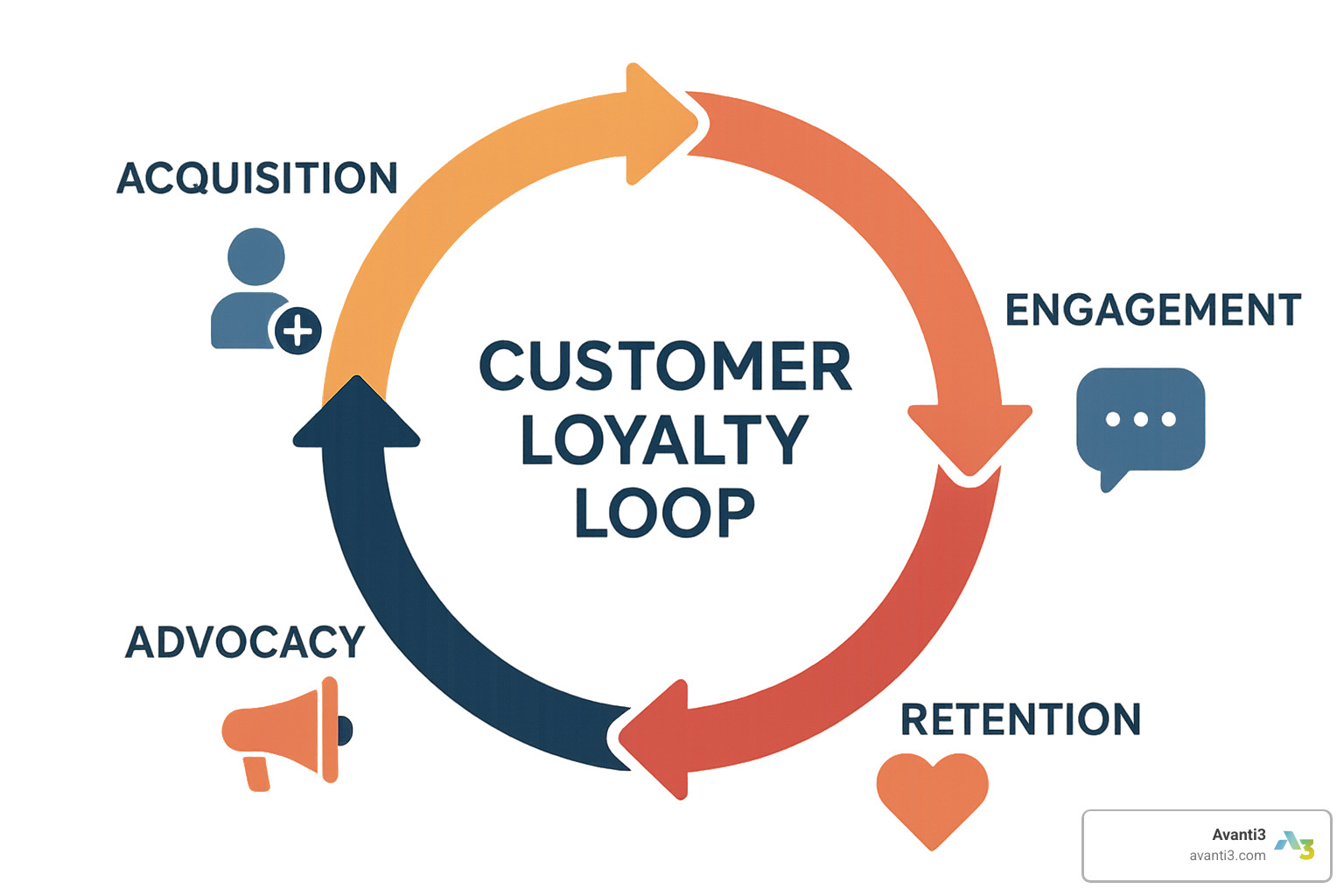
For Businesses
Let’s talk real results. Companies embracing customer engagement platforms aren’t just seeing modest improvements—they’re witnessing changes. Toyota boosted test drive applications by an impressive 166%. Leroy Merlin enjoyed an 8.8% jump in eCommerce revenue. And Slazenger? They achieved a jaw-dropping 49x ROI in just eight weeks.
Beyond the numbers, these platforms bring clarity to your decision-making. No more “I think our customers might like this” guesswork. With all customer data unified in one place, you gain that coveted 360-degree view that informs smarter strategies and more confident decisions.
Your operational costs get a makeover too. By automating routine interactions, you free up your team for what humans do best—solving complex problems with empathy and creativity. Renault experienced this firsthand, cutting customer service wait times by 93% after consolidating data and implementing AI assistants.
Marketing agility becomes your new superpower. Instead of planning campaigns weeks in advance, you can launch, test, and optimize on the fly. One food retailer slashed cart abandonment by 61% and boosted monthly order values by 38% by integrating WhatsApp Commerce—all because they could quickly pivot based on real-time insights.
Perhaps most importantly for your team, a customer engagement platform eliminates the productivity-killing habit of constantly switching between tools. As one marketing director put it, “A single omnichannel platform significantly reduces context switching and complexity.” Your people spend less time juggling systems and more time creating meaningful customer moments.
For Customers
From your customers’ perspective, the benefits are equally compelling. They experience consistent, personalized interactions that actually acknowledge their history with your brand. No more frustrating “Who are you again?” moments when they switch from email to phone support. This matters more than ever, with 73% of customers now expecting better personalization as technology advances.
Channel flexibility becomes the norm, not the exception. Some customers prefer texting for quick updates but email for detailed information. Others want chat during work hours but phone calls for urgent issues. A customer engagement platform honors these preferences, addressing the 71% of customers who choose different channels depending on context.
When problems arise, resolution happens faster. Your support team has instant access to the customer’s complete history, eliminating the dreaded “Let me transfer you” or “Can you explain that again?” scenarios. This directly addresses the 81% of customers who expect speedier service as technology improves.
For straightforward matters, self-service options empower customers to find answers on their own terms. Whether through knowledge bases, chatbots, or community forums, this independence aligns perfectly with the 61% of customers who prefer handling simple issues themselves.
Perhaps most impressively, you can offer proactive support before problems escalate. Imagine noticing that a customer who orders coffee every Monday suddenly stops. Instead of waiting for them to reach out, you can send a friendly check-in with a special offer—turning a potential lost customer into a grateful advocate.
The true beauty of a customer engagement platform is the virtuous cycle it creates: better experiences lead to happier customers, which builds stronger loyalty, which generates more insights to further refine your approach. It’s not just a platform—it’s a relationship engine.
Core Features to Look For in a Customer Engagement Platform
When shopping for a customer engagement platform, you’ll want to focus on capabilities that truly transform how you connect with customers. Not all platforms are created equal, and the right features can make the difference between merely managing customers and building genuine relationships with them.
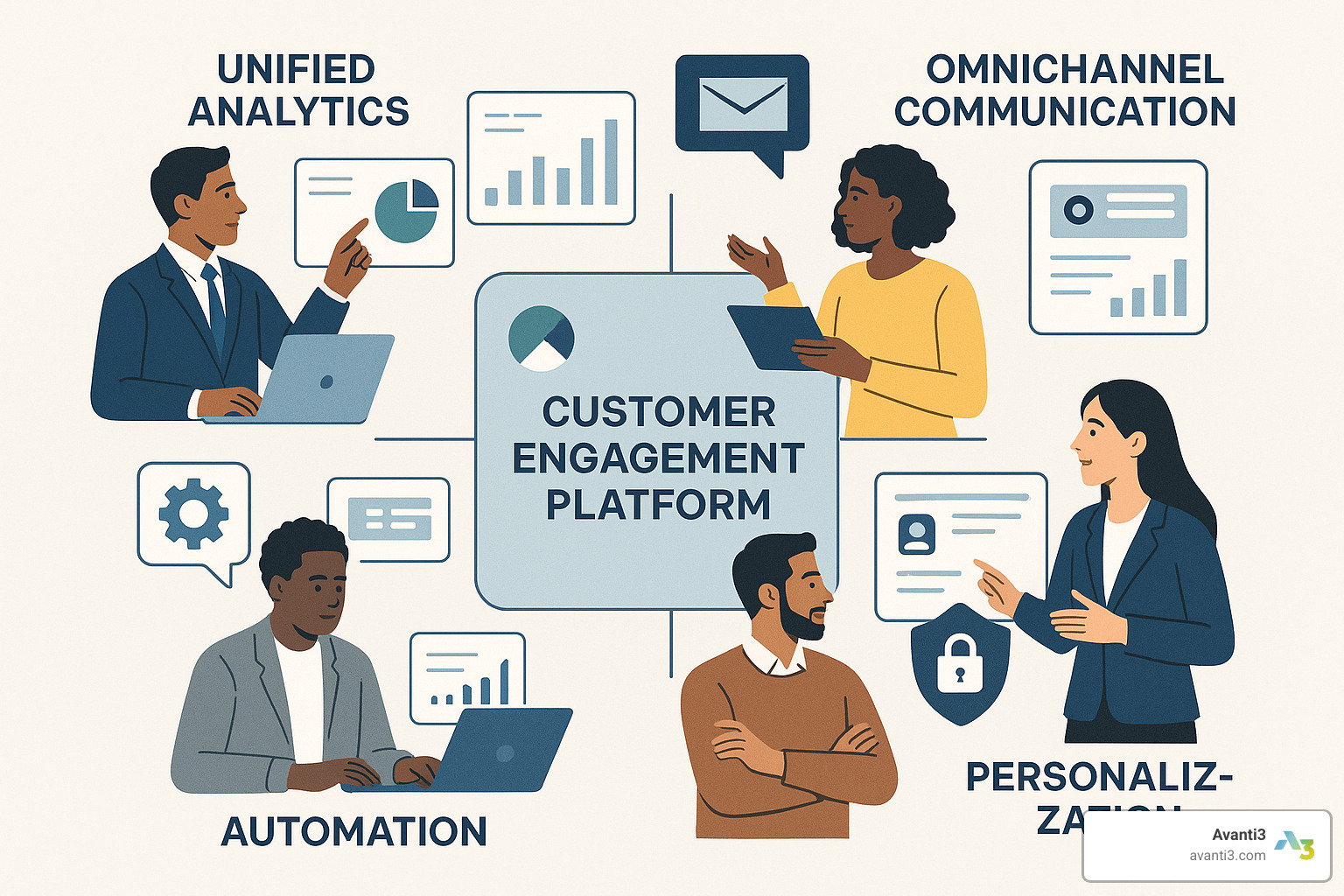
Data Unification & Privacy Controls
At the heart of every effective customer engagement platform is its ability to create a holistic customer view while respecting privacy boundaries.
The digital landscape is shifting dramatically toward first-party data as third-party cookies fade away. Your platform should excel at collecting and activating the data customers willingly share with you directly. The best platforms connect information from all your touchpoints—website, app, in-store, and more—to build real-time customer profiles that evolve with each interaction.
Consent management isn’t just a legal checkbox—it’s a relationship builder. Look for tools that make privacy preferences easy to collect and honor across all channels. As one marketing director told me, “When customers see you respecting their preferences consistently, trust grows naturally.”
Are you prepared for the cookieless future? With Firefox and Safari already blocking third-party cookies and Chrome set to follow in 2024, your platform needs a clear strategy for this new reality. Latest research on privacy shift shows businesses that adapt early will maintain their personalization edge.
At Avanti3, we’ve built privacy-first principles into our DNA, with blockchain-based solutions that add transparency and security to how customer data is handled. Because when trust erodes, everything else follows.
Omnichannel Communication
True engagement happens when you meet customers wherever they prefer to connect.
Your customer engagement platform should seamlessly support the full spectrum of communication channels—email for detailed information, SMS for urgent updates, push notifications for timely alerts, in-app messaging for contextual help, social media for community building, live chat for immediate assistance, and voice for complex conversations.
The magic happens when these channels work together. Your service agents should see all customer interactions in a single interface, regardless of where those conversations started. And when a customer begins chatting on your website but needs to continue via email later, the transition should feel effortless, with no lost context or repeated information.
“The best customer experiences don’t feel like they’re happening across different channels—they just feel natural,” explains one customer experience leader whose retail brand saw a 40% increase in satisfaction after implementing channel-seamless support.
Channel preferences matter too—some customers love text messages while others prefer email. Your platform should track and respect these preferences automatically. More info about Digital Engagement Platforms
AI-Driven Personalization & Recommendations
Artificial intelligence transforms good customer engagement into exceptional experiences that anticipate needs before they’re even expressed.
Look for predictive analytics that identify patterns in customer behavior and suggest the perfect next step for each individual. The best platforms don’t just react to customers—they proactively recommend the next-best-action for your team, whether that’s offering a specific product, suggesting a service upgrade, or simply checking in at just the right moment.
Content personalization should adapt dynamically based on each customer’s unique preferences and history. When a platform’s AI detects frustration in a customer’s message tone, it should adjust its response approach accordingly—perhaps offering more empathy or escalating to a human agent more quickly.
Virtual assistants have evolved far beyond simple chatbots. Today’s sophisticated AI can handle routine inquiries 24/7 while knowing exactly when to bring in human expertise. One financial services company using Avanti3’s AI tools saw customer resolution times drop by 62% while satisfaction scores actually increased.
Analytics, Feedback & Community
A truly valuable customer engagement platform helps you measure what matters and continuously improve based on real customer input.
Your platform should visualize complete customer journeys across all touchpoints, helping you understand exactly how people move from awareness to advocacy. Built-in survey tools and feedback mechanisms should capture the voice of your customer at critical moments, turning subjective feelings into actionable insights.
Community features take engagement to another level by connecting customers with each other and your brand. One retail brand we worked with saw a 30% jump in customer-generated content and 25% more repeat purchases after launching their community hub. At Avanti3, we’ve liftd community building by incorporating Web3 technologies that reward engagement and foster deeper connections.
Executive dashboards should provide clear visibility into key metrics and trends without requiring a data science degree to interpret them. And sophisticated attribution models help you understand exactly which touchpoints and campaigns drive real conversions, so you can invest more in what works.
More info about Digital Community Building
The best customer engagement platforms don’t just help you talk to customers—they help you build relationships that last. And in today’s competitive landscape, those relationships are your most valuable asset. More info about AI Customer Engagement
Choosing & Implementing the Right Customer Engagement Platform
Finding your perfect customer engagement platform match isn’t just about ticking feature boxes—it’s about finding technology that genuinely transforms how you connect with customers. Think of it as choosing a new team member who’ll be central to your customer relationships for years to come.

Step-by-Step Evaluation Guide
Start your journey by getting crystal clear on what success looks like for you. Are you trying to boost those sagging retention numbers? Breathe new life into customer satisfaction scores? Or perhaps increase the lifetime value of each customer relationship?
Once you’ve defined these goals, create your feature wishlist—but be thoughtful about it. I’ve seen too many companies get impressd by shiny features they never end up using. Instead, focus on capabilities that directly address your customers’ biggest pain points. Remember to think about tomorrow too, not just today’s needs.
The technical fit matters enormously. Your new customer engagement platform needs to play nicely with your existing tech ecosystem. Take time to understand how complex the data migration will be—this is often where implementations stumble. And don’t forget about security and compliance requirements specific to your industry.
When calculating costs, look beyond the sticker price. Implementation, training, and ongoing maintenance can significantly impact your total investment. As one client told me recently, “The platform that seemed most expensive upfront actually saved us money in the long run because it required less customization and support.”
Smart companies start with a focused pilot program. Choose a specific segment of your business where you can demonstrate quick wins, and establish clear metrics to measure success. This builds momentum and internal buy-in for wider adoption.
Common Implementation Challenges & Solutions
Even the best-planned implementations hit roadblocks. Data quality issues frequently top the list—garbage in, garbage out, as they say. Start with a thorough data audit and cleaning process before migration, and put ongoing validation rules in place to maintain quality.
Getting your team excited about new technology can be surprisingly challenging. People naturally resist change. The secret? Involve end-users early in the selection process so they feel ownership. Create role-specific training that shows exactly how the customer engagement platform makes their daily work easier, not harder.
Breaking down departmental silos remains one of the trickiest challenges. At Avanti3, we’ve found that establishing cross-functional implementation teams with shared success metrics encourages collaboration where it might not naturally exist.
Integration complexity can quickly derail your timeline if not managed carefully. Prioritize your integrations based on business impact rather than trying to connect everything at once. Look for platforms with robust APIs and pre-built connectors to simplify this process.
Measuring ROI becomes much easier when you establish clear baseline metrics before implementation. Track improvements regularly and connect engagement metrics directly to business outcomes that executives care about.
Real-World Success Snapshots
The proof is in the results. I’ve seen how the right customer engagement platform transforms businesses:
A home improvement retailer, Leroy Merlin, boosted their e-commerce revenue by 8.8% through more targeted, personalized engagement strategies.
One food retailer tackled the persistent problem of abandoned carts, reducing them by an impressive 61% by implementing WhatsApp Commerce integration for seamless follow-ups.
Toyota’s success story particularly stands out—they achieved a remarkable 166% increase in test drive applications by implementing personalized engagement sequences that reached potential customers at exactly the right moment in their buying journey.
Fashion brand NA-KD not only increased customer lifetime value by 25% but also achieved a stunning 72x ROI within just 12 months through their improved engagement strategy.
Even in customer service, the impacts are dramatic. Renault slashed their service wait times by 93% after consolidating their customer data and implementing AI-powered virtual assistants.
What unites these success stories isn’t just technology—it’s a fundamental shift in how these companies approach customer relationships. They’ve moved from transactional thinking to building genuine, ongoing conversations with their customers.
At Avanti3, we’ve taken this philosophy even further by integrating Web3 technologies that create entirely new possibilities for customer engagement and loyalty. Our implementation approach focuses on making these transitions smooth and rewarding for both your team and your customers.
Future Trends Shaping Customer Engagement Platforms
The world of customer engagement platforms is evolving at breathtaking speed, with innovations that are changing how brands and customers connect in meaningful ways.
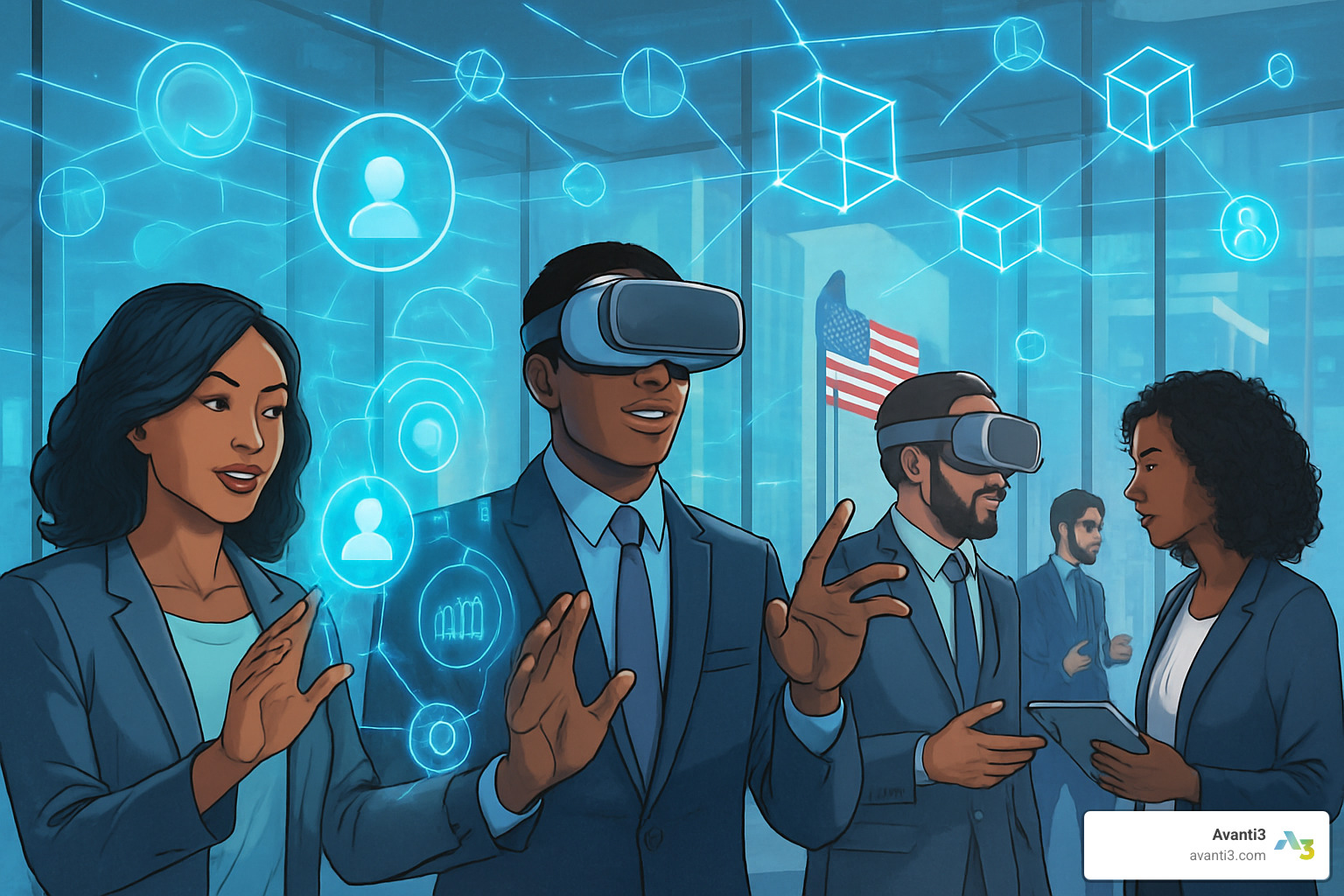
AI Copilots and Generative Content
Remember when AI was just about crunching numbers? Those days are long gone. Today’s AI has become a true creative partner in customer engagement.
AI is now writing personalized emails that sound like they came from your favorite colleague. It’s crafting product recommendations that feel almost uncanny in their accuracy. The most exciting part? These systems are getting better at understanding not just what customers say, but how they feel.
Generative AI is revolutionizing content creation, allowing brands to produce thousands of personalized messages that actually sound human. Meanwhile, predictive engagement tools are anticipating customer needs before they even reach out. I’ve seen customer service teams transformed by agent augmentation technology that whispers helpful suggestions in real-time, making every representative as knowledgeable as your most seasoned expert.
The AI doesn’t replace the human touch – it amplifies it, handling routine tasks while freeing people to focus on complex, emotionally nuanced interactions where humans still shine brightest.
Web3 and Blockchain-Powered Engagement
At Avanti3, we’re particularly excited about how Web3 technologies are creating entirely new dimensions of customer engagement.
Imagine loyalty programs where points aren’t just numbers in a database but loyalty tokens that customers truly own. These digital assets can be traded, gifted, or used across multiple brands. We’re seeing fashion retailers offer NFT experiences that blend digital collectibles with real-world perks – like exclusive store access or limited edition products.
Blockchain verification is bringing much-needed transparency to customer reviews and product authenticity. When a luxury brand claims sustainable sourcing, blockchain lets customers verify that journey from raw material to finished product. And with decentralized identity solutions, customers can share just enough personal information for personalization without surrendering their privacy.
These technologies aren’t just technical novelties – they’re creating genuine two-way value exchanges that transform passive customers into active community members with real ownership stakes in their relationship with your brand.
Immersive Experiences
The line between digital and physical customer experiences isn’t just blurring – it’s disappearing altogether.
Home appliance companies are pioneering AR/VR customer service where technicians can see exactly what you’re seeing and guide you through repairs with floating digital annotations. Furniture retailers have created virtual shopping environments where you can place photorealistic 3D models in your actual living room before purchasing.
Mixed reality events are combining the best of physical gatherings with digital improvements. Imagine attending a concert where your smartphone reveals hidden visual elements synchronized with the music, or sporting events where real-time stats appear in your field of vision.
The most forward-thinking brands are leveraging spatial computing to create context-aware engagement based on where customers are and what they’re doing. Your coffee shop app might notice you’re at the airport and offer a discount on your favorite pre-flight brew, delivered right to your gate.
Privacy-First Engagement
As privacy regulations tighten globally, smart brands are turning privacy from a compliance headache into a competitive advantage.
The most successful companies are building zero-party data strategies – directly asking customers what they want rather than trying to piece it together through tracking. They’re designing privacy UX that makes data sharing settings clear and simple, not buried in legal jargon.
Contextual targeting is making a comeback, focusing on the content customers engage with rather than invasive personal tracking. And consent-based personalization is creating transparent value exchanges – “Tell us your preferences, and here’s what you’ll get in return.”
At Avanti3, we believe the future belongs to brands that can thoughtfully blend these emerging technologies while maintaining authentic human connection. Our platform integrates Web3 capabilities with traditional engagement tools, creating digital experiences that feel both cutting-edge and genuinely personal.
The most exciting part? We’re just scratching the surface of what’s possible when these technologies converge. The next generation of customer engagement platforms won’t just help you reach customers – they’ll create entirely new types of relationships that weren’t previously possible.
More info about Digital Fan Engagement
Frequently Asked Questions about Customer Engagement Platforms
What role does AI play in a customer engagement platform?
AI is the brainpower behind modern customer engagement platforms, turning mountains of customer data into meaningful actions and personalized experiences. It’s like having a digital assistant that never sleeps, constantly working to understand and serve your customers better.
Think of AI as the engine that powers several key functions:
AI breathes life into your customer data through predictive analytics, spotting patterns that humans might miss. It can tell you which customers are likely to make another purchase and which might be thinking of leaving.
The natural language processing capabilities in today’s platforms are remarkably human-like, understanding customer questions and responding appropriately whether through chatbots or by routing to the right agent.
Perhaps most impressive is how AI enables personalization at scale. What once required an army of marketers can now happen automatically, with each customer receiving content custom specifically to them. Avon saw this with a 23% conversion boost using AI-powered product recommendations.
AI also reads between the lines with sentiment analysis, detecting whether a customer is frustrated, excited, or confused, and adjusting responses accordingly. This emotional intelligence makes digital interactions feel more human.
Behind the scenes, AI handles workflow automation, making sure the right actions happen at the right time based on where customers are in their journey with your brand.
At Avanti3, we’ve combined these AI capabilities to create experiences that feel personal and thoughtful while operating efficiently at any scale.
How does a customer engagement platform support omnichannel communication?
The days of disjointed customer experiences are over, thanks to how customer engagement platforms handle communication across channels. Instead of treating each channel as a separate silo, these platforms create a seamless conversation that flows naturally across touchpoints.
The magic happens through unified customer profiles that maintain a complete picture of each person regardless of how they interact with you. When someone tweets at your brand and then calls customer service, the agent already knows about the tweet.
Modern platforms excel at channel orchestration, ensuring your messaging is coordinated. No more awkward situations where a customer receives a “We miss you” email right after making a purchase on your app.
One of the most appreciated features is context preservation. When customers start a conversation on your website chat and later continue via email, they don’t have to repeat themselves. Their history and context follow them, saving frustration on both sides.
These platforms also respect how people want to be reached through automatic preference management. Some customers prefer texts for urgent updates and emails for detailed information—the system remembers and honors these choices.
Perhaps most importantly, consistent personalization ensures that your brand voice and the customer’s personalized experience remain constant whether they’re on your mobile app, website, or talking to a service agent.
At Avanti3, we’ve taken omnichannel a step further by incorporating Web3 channels like blockchain wallets and NFT experiences, opening up entirely new ways to engage with your audience.
How can a CEP improve customer retention and loyalty?
A customer engagement platform works like a relationship coach for your business, helping you build stronger, longer-lasting connections with customers. The impact on retention and loyalty can be remarkable.
These platforms include sophisticated early warning systems that detect signs of customer dissatisfaction or disengagement before they result in churn. Maybe someone who usually logs in weekly hasn’t visited in a month—the platform notices and can trigger a re-engagement campaign automatically.
When engagement drops, personalized re-engagement kicks in. Instead of generic “We miss you” messages, customers receive offers or content relevant to their specific interests and history with your brand.
Modern platforms also boost loyalty programs through seamless loyalty program integration across all touchpoints. Whether a customer earns points through your app, website, or in-store, their rewards stay consistent and accessible.
Feedback loops built into these platforms ensure you’re not just talking at customers but listening to them too. When feedback indicates a problem, the system can alert the right team members and track resolution.
The best platforms also celebrate milestone recognition, acknowledging important moments in the customer relationship—from anniversaries to achievement of goals—strengthening emotional connections to your brand.
The results speak for themselves: NA-KD boosted customer lifetime value by 25% with their engagement platform, while SoundCloud successfully migrated over 200 campaigns for more than 100 million users in just 12 weeks to improve their retention strategy.
At Avanti3, we’ve taken loyalty to new heights by incorporating blockchain-based rewards and NFTs that customers truly own. This creates a deeper connection between brands and customers by offering digital assets with real value and permanence.
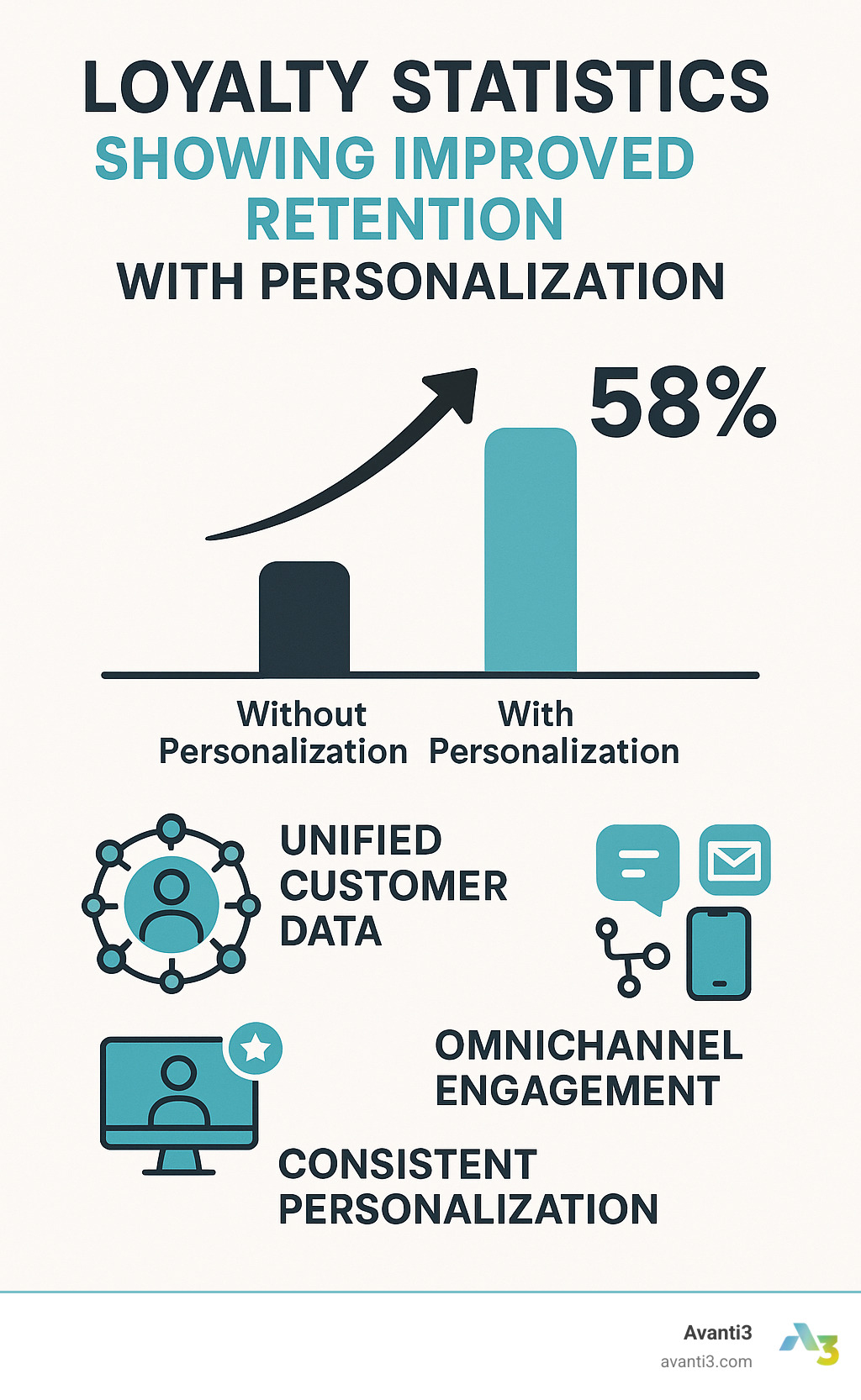
Conclusion
The evolution of customer engagement platforms represents a fundamental shift in how businesses connect with their customers. No longer is it enough to personalize an email with a customer’s first name or send generic promotions. Today’s consumers expect brands to understand their preferences, anticipate their needs, and engage them on their terms—across any channel they choose.
As we’ve explored throughout this guide, modern customer engagement platforms combine unified customer data, AI-powered personalization, omnichannel communication, and robust analytics to create seamless experiences that drive loyalty and growth. The impressive results achieved by companies implementing these platforms—from Toyota’s 166% increase in test drive applications to Renault’s 93% decrease in service wait times—demonstrate the transformative potential of getting customer engagement right.
At Avanti3, we’re taking customer engagement to the next level by integrating Web3 technologies like NFTs, blockchain, AR/VR, and AI into our platform. This unique approach empowers creators and brands with customizable engagement tools that offer not just personalization, but true digital ownership and community building. Our solutions create unique digital experiences and rewards systems that set a new standard in digital engagement and fan monetization.
The future of customer engagement will be defined by those who can balance personalization with privacy, automation with authenticity, and innovation with intuitive experiences. By embracing a comprehensive customer engagement platform strategy now, businesses can position themselves to not just meet customer expectations, but exceed them—creating lasting relationships that drive sustainable growth.
Ready to transform your customer engagement strategy? Explore how Avanti3’s innovative approach can help you build deeper connections with your audience through next-generation digital experiences.


